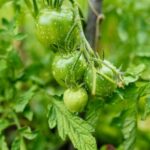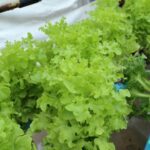Are you looking for the best vegetable gardening ideas to start your own thriving garden at home? Vegetable gardening is not only a rewarding and fulfilling hobby but also a sustainable way to provide fresh and healthy produce for you and your family. In this article, we will explore the benefits and basics of vegetable gardening, from choosing the right location to harvesting and storing your homegrown vegetables.
When it comes to vegetable gardening, the first step is to understand the benefits of growing your own produce. Not only does it allow you to have access to fresh, organic vegetables, but it also promotes outdoor physical activity and can be a therapeutic way to reduce stress. Additionally, vegetable gardening can help reduce grocery expenses and promote self-sufficiency.
To get started with your vegetable garden, it’s important to consider the basics such as choosing the right location, essential tools and supplies, best vegetables for beginners, creative garden layout ideas, tips for maintenance, organic pest control and disease prevention, as well as harvesting and storing your homegrown vegetables. We will delve into all of these aspects in this article to help you kickstart your vegetable gardening journey with confidence and success.
Whether you have a green thumb or are just beginning your gardening adventure, there’s something for everyone in this comprehensive guide.
Choosing the Right Location for Your Vegetable Garden
Sunlight and Shade
One of the most important factors to consider when choosing a location for your vegetable garden is sunlight. Most vegetables require at least 6-8 hours of direct sunlight each day to thrive. Take note of the different areas in your yard or outdoor space throughout the day to determine which spots receive the most sunlight. Additionally, be mindful of any obstructions such as trees or buildings that may cast shade on certain areas.
Soil Quality and Drainage
Another crucial aspect to consider is the quality of the soil and its drainage capabilities. Good soil should be well-draining, rich in organic matter, and have a neutral pH level. Conduct a soil test to assess its fertility and structure, as this will determine the success of your vegetable garden. It’s also important to choose a location with good drainage to prevent waterlogged soil, which can lead to root rot and other problems for your plants.
Proximity to Water Source
Convenience is key when it comes to watering your vegetable garden. Choose a location that is close to a water source, whether it’s a hose, outdoor spigot, or irrigation system. This will make it easier for you to ensure that your plants are getting the proper amount of water they need without the hassle of lugging watering cans or hoses across long distances.
By carefully considering these factors – sunlight and shade, soil quality and drainage, and proximity to a water source – you can select the best location for your vegetable garden. Taking the time to choose an ideal spot will set you on the path towards a successful harvest and thriving plants in your homegrown garden.
Essential Tools and Supplies for Successful Vegetable Gardening
When it comes to successful vegetable gardening, having the right tools and supplies is essential. These items can make the process of planting, watering, and caring for your vegetables much easier and more efficient. Here are some of the best tools and supplies you’ll need for a thriving vegetable garden:
1. Garden Spade or Shovel: A sturdy garden spade or shovel is crucial for turning over the soil, digging holes for planting, and adding compost or fertilizer to the garden bed.
2. Hand Trowel: For smaller tasks like transplanting seedlings or digging up weeds, a hand trowel is indispensable. Look for one with a comfortable handle and a durable metal blade.
3. Pruners or Shears: Keep your plants healthy and tidy by investing in a good pair of pruners or shears. Use them to trim away dead or damaged foliage, shape your plants, and harvest ripe vegetables.
4. Watering Can or Hose: Consistent watering is vital for vegetable plants, so make sure you have a reliable watering can or hose to keep your garden hydrated during dry spells.
5. Garden Gloves: Protect your hands from blisters, thorns, and dirt by wearing a pair of sturdy garden gloves while you work in the garden.
6. Organic Fertilizer and Mulch: Provide your vegetables with essential nutrients by using organic fertilizers such as compost or manure. Mulch will help retain moisture in the soil and prevent weed growth.
7. Seed Starting Trays: If you plan on starting your vegetable plants from seeds indoors, seed starting trays are an excellent investment. They provide a controlled environment for germination and early growth.
By having these essential tools and supplies on hand, you’ll be well-equipped to tackle any task in your vegetable garden with confidence and ease.
Best Vegetables to Grow for Beginners
Many beginners may feel overwhelmed when starting their vegetable garden, but with the right guidance, it can be a rewarding experience. Choosing the best vegetables to grow for beginners is crucial in ensuring a successful harvest and keeping motivation high. Here are some top picks for those who are new to vegetable gardening.
Tomatoes
Tomatoes are a popular choice for beginner gardeners due to their versatility and relatively low maintenance. They can be grown in containers or directly in the ground, making them suitable for various garden sizes. With proper care and support, tomatoes can yield an abundant harvest throughout the growing season.
Leafy Greens
Leafy greens such as lettuce, spinach, and kale are ideal for beginners as they are quick to grow and provide a continuous harvest. These vegetables thrive in cooler weather, making them perfect for spring and fall planting. They also do well in containers or raised beds, making them a great option for those with limited gardening space.
Zucchini
Zucchini is known for its prolific production, making it an excellent choice for beginner gardeners. These fast-growing vegetables thrive in warm weather and can quickly take over your garden with their large leaves and abundant fruits. With regular harvesting, zucchini plants can provide a bountiful supply of this versatile vegetable.
By starting with these easy-to-grow vegetables, beginners can gain confidence and experience success in their gardening endeavors. Planting these varieties will not only result in a satisfying harvest but also serve as a stepping stone towards mastering the art of vegetable gardening.
Creative and Practical Garden Layout Ideas
When it comes to vegetable gardening, the layout of your garden can make a big difference in the success of your crops. One of the best vegetable gardening ideas for creating a practical and efficient garden layout is using raised beds. Raised beds not only provide good drainage and aeration for your plants but also help keep weeds at bay. They also make it easier to plan and manage your garden space, giving you better control over the soil quality.
Another great layout idea is using companion planting to maximize space and encourage natural pest control. By planting complimentary vegetables together, you can create a more diverse and healthy garden ecosystem. For example, planting basil next to tomatoes can help improve the flavor of the tomatoes and repel pests, while growing cucumbers near beans can provide natural trellises for the vines.
Creating designated paths or walkways in your vegetable garden is also essential for practicality and aesthetics. This allows easy access for maintenance and harvesting without compacting the soil around your plants. Additionally, incorporating vertical gardening techniques such as trellises or arbors can maximize space while adding visual interest to your garden.
Implementing these creative and practical garden layout ideas will not only enhance the beauty of your vegetable garden but also improve its productivity and overall success.
| Vegetable Garden Layout Ideas | Description |
|---|---|
| Raised Beds | Provides good drainage, aeration, weed control, and better management of soil quality. |
| Companion Planting | Maximizes space, encourages natural pest control, promotes plant health through diversity. |
| Designated Paths/Walkways | Allows easy access for maintenance without compacting soil, contributes to aesthetics. |
Tips for Maintaining a Healthy and Thriving Vegetable Garden
Maintaining a healthy and thriving vegetable garden requires ongoing care and attention to ensure that your plants continue to grow and produce a bountiful harvest. Here are some tips to help you keep your vegetable garden in top shape:
- Watering: One of the most important aspects of maintaining a healthy vegetable garden is ensuring that your plants receive an adequate amount of water. Different vegetables have different water requirements, so it’s essential to research the specific needs of the plants in your garden. In general, most vegetables need about 1-1.5 inches of water per week, either from rainfall or irrigation.
- Weeding: Keeping your garden free from weeds is crucial for the health of your vegetables. Weeds compete with your plants for nutrients and water, so it’s important to regularly remove them from your garden beds. Consider using mulch to help suppress weed growth and retain moisture in the soil.
- Fertilizing: Providing your vegetables with the necessary nutrients is essential for their growth and productivity. Consider using organic fertilizers such as compost or well-aged manure to nourish your plants naturally. Additionally, be sure to follow recommended guidelines for fertilizing specific types of vegetables, as over-fertilization can harm your plants.
By following these tips for maintaining a healthy and thriving vegetable garden, you can ensure that your plants continue to flourish and provide you with delicious homegrown produce throughout the growing season.
Remember that each type of vegetable may require different care, so be sure to research the specific needs of the plants you’re growing in order to provide them with the best possible environment for success.
Organic Pest Control and Disease Prevention in Vegetable Gardening
When it comes to maintaining a healthy and thriving vegetable garden, organic pest control and disease prevention are essential. Using natural methods to keep pests at bay and prevent diseases from spreading will not only protect your crops but also ensure that they are safe for consumption.
One of the best vegetable gardening ideas for organic pest control is companion planting. This involves growing certain plants together that can benefit each other in various ways, such as repelling pests or attracting beneficial insects. For example, planting marigolds alongside your vegetables can help deter nematodes, while attracting pollinators like bees.
Another effective method for organic pest control is using homemade remedies such as garlic and chili pepper sprays. These natural deterrents can be easily made at home and sprayed on your plants to keep pests away without the use of harmful chemicals. Additionally, regularly inspecting your plants for any signs of pest infestations or diseases and promptly addressing any issues is crucial for prevention.
In addition to organic pest control, proper plant care practices such as adequate watering, providing sufficient sunlight, and properly spacing out your plants can also help prevent diseases in your vegetable garden. By incorporating these best vegetable gardening ideas into your gardening routine, you can enjoy a bountiful harvest of healthy and delicious homegrown vegetables.
Harvesting and Storing Your Homegrown Vegetables
After putting in all the hard work of planting and tending to your vegetable garden, it’s time to reap the rewards of your labor. Knowing when and how to harvest your homegrown vegetables is essential in order to enjoy them at their peak freshness and flavor. The best vegetable gardening ideas include proper harvesting techniques for different types of vegetables.
For root vegetables such as carrots, radishes, and beets, it’s best to harvest them when they have reached a good size but are still tender. Leafy greens like lettuce and spinach can be harvested by cutting the outer leaves when they reach a usable size, allowing the inner leaves to continue growing.
Tomatoes should be picked when they are fully colored but still firm, while peppers can be harvested when they reach full size and have turned the appropriate color for their variety.
Once your vegetables are harvested, proper storage is crucial to maintaining their freshness. Many vegetables can be stored in a cool, dark place such as a root cellar or refrigerator. However, some vegetables require specific storage conditions in order to stay fresh longer. For example, onions and garlic should be hung in a dry place with good air circulation, while potatoes need to be kept in a dark location with moderate humidity.
In addition to knowing when and how to harvest each type of vegetable from your garden, understanding the best methods for storing them will ensure that you can enjoy your homegrown produce long after the growing season has ended.
| Harvesting Tips | Storing Techniques |
|---|---|
| Root vegetables – harvest when tender | Cool, dark place for most veggies |
| Leafy greens – pick outer leaves first | Specific storage conditions for onions & potatoes |
Final Thoughts
As you embark on your vegetable gardening journey, remember that the best vegetable gardening ideas are the ones that bring you joy and satisfaction. Whether you choose to grow a small container garden on your patio or a large plot in your backyard, the act of nurturing plants and reaping the rewards of your labor is a fulfilling experience.
The connection to nature, the sense of accomplishment, and the delicious, homegrown produce are just a few of the reasons why vegetable gardening has become increasingly popular in recent years.
In addition to providing an opportunity to cultivate fresh and healthy food, vegetable gardening offers numerous other benefits. It can serve as a form of stress relief, physical exercise, and a way to connect with family and friends. As you continue your journey in vegetable gardening, remember to embrace the process of learning and growing. Each season presents new challenges and opportunities for experimentation, allowing you to expand your knowledge and skills as a gardener.
Ultimately, the best vegetable gardening ideas are those that inspire you to get outside, dig in the dirt, and savor the joys of nature. Your garden may not always turn out exactly as planned, but every success and setback will contribute to your growth as a gardener. So go ahead – plant those seeds, tend to your garden with care, and enjoy the bountiful harvest that will surely follow. Happy gardening.
Frequently Asked Questions
What Is the Most Efficient Vegetable Garden Layout?
The most efficient vegetable garden layout depends on various factors such as available space, sunlight, and soil quality. One popular layout is the square foot gardening method, which maximizes space by dividing the garden into smaller square sections.
What Is the Best Set Up for a Vegetable Garden?
The best set up for a vegetable garden includes choosing a sunny location, preparing the soil with organic matter, and providing proper spacing between rows and individual plants. Raised beds can also be beneficial for better drainage and easier maintenance.
What Are the 10 Easiest Vegetables to Grow?
The 10 easiest vegetables to grow are typically ones that are low-maintenance and adaptable to different growing conditions. Some examples include tomatoes, lettuce, cucumbers, radishes, green beans, zucchini, carrots, peppers, spinach, and peas. These vegetables tend to be beginner-friendly and yield satisfying results for gardeners of all levels.

If you’re looking to get into vegetable gardening, or are just looking for some tips on how to make your current garden better, then you’ve come to the right place! My name is Ethel and I have been gardening for years. In this blog, I’m going to share with you some of my best tips on how to create a successful vegetable garden.





